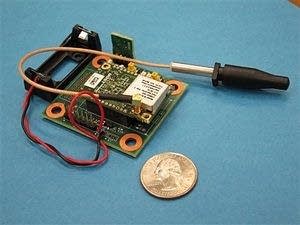Modern high-tech protects ancient high-art

Museums work hard to provide the best environment for artwork so that it can both be seen, and be protected from the elements. Heat, light and humidity can all have disastrous effects on prints, paintings and even tapestries.
A new device created by the folks at IBM is giving museums a whole new level of sophistication when it comes to monitoring gallery conditions.
National Public Radio visited the Cloisters Museum - a branch of the Metropolitan Museum of Art in New York - where the sensor is being tested out.
Create a More Connected Minnesota
MPR News is your trusted resource for the news you need. With your support, MPR News brings accessible, courageous journalism and authentic conversation to everyone - free of paywalls and barriers. Your gift makes a difference.
The IBM sensors -- each housed with a radio and a microcontroller in a case about the size of a pack of cigarettes -- can measure temperature, humidity, air flow, light levels, contaminants and more. They are inexpensive and run on low power, and several can be positioned in a room, scientists said Wednesday.
The information collected goes into a three-dimensional "climate map" that can be accessed on a computer, and the data can then be analyzed to adjust the climate, spot trends and even make predictions.
The data collected will help museum staff determine how best to accomodate for such anomalies as sun shining through a window onto a specific part of the room, a group of people walking into a gallery after being out in the rain, or a packed opening event.
You can read more about the technoology here.
[image]
An example of a small electronic sensor, like those that will be deployed at the Cloisters Museum, is placed on a table next to a quarter to illustrate its size in New York. The new system will monitor the environment in the museum to help preserve the works of art within its walls. (AP Photo/Metropolitan Museum of Art)